Titanosaur Breeding Ground
The rocks of Patagonia, so bare of vegetation also contain astonishing evidence of how titanosaurus began their lives in the titanosaur breeding ground.
David Attenborough “500 miles north is the largest dinosaur nesting ground yet discovered. The remains of their eggs and their nests are wherever I look. In fact, it’s quite difficult for me to take a step without walking on a dinosaur eggshell.
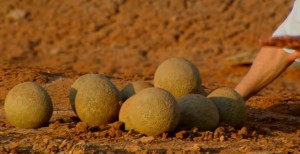
Over thousands of years, the wind and rain have cleared away the soft rock that once enclosed these fragments and they can tell us quite a lot about how titanosaurs reproduced. Careful excavation has shown that these dinosaurs laid eggs in clutches of up to 30 or 40 at a time. They would have looked rather like these replicas Because they lay on the ground, not covered by soil, but in a shallow depression.
I’m shown around by Dr Luis Chiappe who, with his team, discovered this remarkable site. Dinosaur eggs here were laid on an old river plain. Then the river flooded and covered the unhatched eggs, preserving them in mud.”
Dr Luis Chiappe
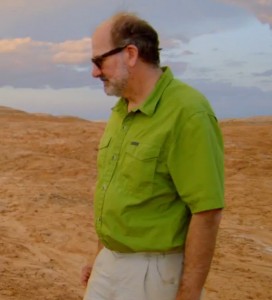
Dr Luis Chiappe “You see, you know, many eggs… for kilometres and kilometres”
The fragments could tell us quite a lot about how the dinosaurs nested. But some, amazingly, can do even more than that.
Museo Carmen Funes, Argentina
Dr Luis Chiappe “All these example have something quite special. This one is my favourite. And what you can see is a very large patch of baby dinosaur skin.”
David Attenborough “And this is not just an impression, this is the mineralised skin.”
Dr Luis Chiappe “The eggs were not just preserving the bones, they also were preserving the skin of these babies. This was just on the surface. I remember picking this up and brushing it a little bit and then using my hand lens and looking at this exact patch of skin and I realised that we had found something that no person had ever seen before.”
David Attenborough “It must have been very close to hatching. It’s almost complete.”
Dr Luis Chiappe “Yes, that’s what we believe.”
David Attenborough “And then a flood…”
Dr Luis Chiappe “Killed them all. Unfortunately for them, good for us.”
Luis Chiappe has dozens of complete eggs in his museum and he allows me to examine some of his most precious specimens for myself. There are many other remarkable things in these astonishing time capsules.
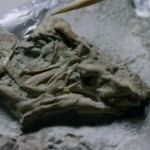
This one has got, perfectly clearly, the limb bones. Here is a skull. There’s the orbit of the eye. There’s the lower jaw, there’s the snout.
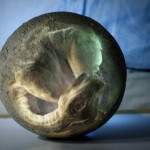
And here is a replica of what the complete, uncrushed shell must have looked like. With all these details, it is possible to imagine how a baby titanosaur entered the world.
To get an idea of how these youngsters might have lived, we can compare them with their closest living relatives – birds. Rather like baby ostriches, a young titanosaur would have been able to walk soon after hatching. They may well have gathered into groups to give some safety from predators, as young ostriches do.
How did the giant Titanosaur move
Microscopic analysis of dinosaur leg bones show rings, rather like tree rings, and these indicate that titanosaurs grew very swiftly early in their lives and they could have lived for some 50 years, plenty time to become enormous.
The team now has 150 bones of our titanosaur, enough to get an idea, not only of its weight, but also its height and length.
Now, the plan is to build a life-size reproduction of the complete skeleton.
It’s a challenge to find a place big enough to house an animal that’s four times longer than a London bus and nearly twice its height.
Putting the skeleton together will help us understand the particular challenges of being such a giant.
One of the mysteries surrounding our dinosaur is, how could an animal as big as it was actually move about?
Professor John Hutchison’s analysis suggests that our titanosaur’s legs, like those of an elephant, were place vertically beneath the body like strong, massive columns. This arrangement transmits the weight to the toes and then spreads the force, using fatty pads in the back feet, as shock absorbers.
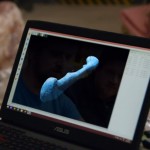
But our titanosaur had one other adaptation to help them walk – one that elephants lack.
A clue to this can be seen on the giant thighbone.
Ben Garrod specialises in reconstructing skeletons and he’s joining the team to look at the bones in detail. Marks on them show clearly where large muscles were attached. This lump is where a huge muscle was attached to the femur. The other end of this muscle was connected to bones like these on the tail. It’s this connection that helped our dinosaur to walk.

